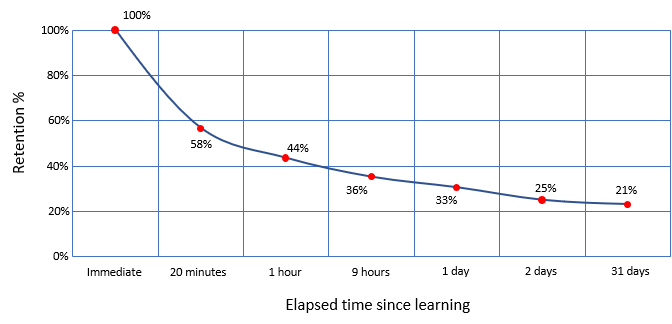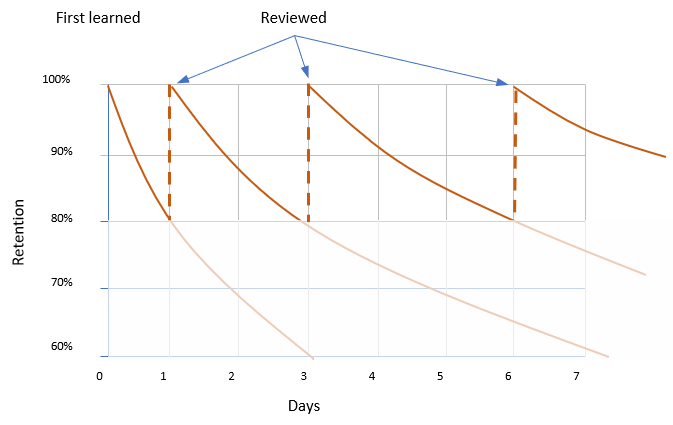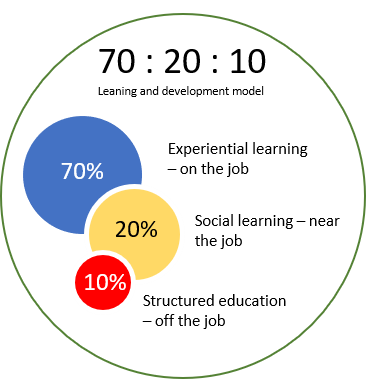Whenever I write an article that includes models of human behaviour I always feel I have to start with George Box’s famous statement “All models are wrong but some are useful”.
That aphorism is most definitely true in the context of this article, which looks at two things: how people gain knowledge, how they lose it and how we can successfully convert knowledge into competency.
Project delivery1 is an extensive, varied and sometimes complex discipline. To be an effective project, programme or portfolio professional you need to have a lot of knowledge, but of course knowledge is just the starting point. Unless that knowledge is applied competently, we will not see projects, programmes and portfolios being well managed and producing the desired benefits.
When it comes to gaining knowledge in project, programme and portfolio management, the obvious starting point for many people is a training course. The variety on offer is bewildering and ranges from short courses of a few days to bachelor and post-grad degrees. Whatever the course, the problem remains – how do we convert knowledge into competence.
Here comes the first model: Ebbinghaus’s Forgetting Curve. This was first defined by the German psychologist Hermann Ebbinghaus in 1885. It simply shows what we all instinctively know - whatever we learn, we quickly start to forget.

As a piece of scientific research, Ebbinghaus’s work was limited. The sample was one – himself, and the exercise was to simply learn and remember three-letter made up words like ‘zof’ and ‘qax’. Nevertheless the model endures because we all identify with it and it definitely seems to reflect reality.
So how do we make what we learn stick? Ebbinghaus argued that we need ‘spaced learning’, what every student knows as ‘revision’. But in the short term Ebbinghaus identified very specific intervals to maximise the effect, the first being after one day.

Anyone who attends a one-week course in Project Management with an exam at the end will know that reviewing and reflecting each day’s new knowledge helps retention. Ebbinghaus also has a review after three days, which also fits well with the format of one-week courses. But here comes the problem: to really start embedding the knowledge, your next review is due after six days – by which time the course is done and you are having a weekend rest before re-joining the real world on Monday morning with a week’s worth of emails to catch up on. The course quickly becomes a distant memory.
Perhaps 31 days later (when Ebbinghaus suggests only 21% or the original knowledge remains) you are presented with a certificate that indicates what you knew 26 days ago but is not a reflection of what you know now.
Before I address this, let’s look at another model: the ’70:20:10’ model that was developed by McCall, Lombardo and Eichinger in the 1980s.
 This says, very simply, that 70% of knowledge is gained through job-related experiences, 20% though interactions with others and only 10% through formal education events (partly because of Ebbinghaus’s forgetting curve).
This says, very simply, that 70% of knowledge is gained through job-related experiences, 20% though interactions with others and only 10% through formal education events (partly because of Ebbinghaus’s forgetting curve).
This model indicates that we start off with formal, theoretical knowledge and then enhance this by sharing knowledge and experiences with others. Experiential learning is then gained by applying this knowledge to our day-to-day work.
The objective of any personal development is to improve an individual’s ability to effectively deliver projects and programmes. To achieve this we need to start with an initial understanding of good practice in project delivery and start applying this straight away. By continuously learning from others and embedding those good practices in our work, we convert knowledge to competence
The Praxis Pathway helps you to do exactly that. It provides an Individual Path that delivers knowledge and a checklist based approach that helps embed that knowledge on the job. It also offers a Team Path that contributes to social learning and a means of understanding how different people perceive common knowledge in different ways. Ultimately, it provides a means of tracking how investment in individual and team learning contributes to organisational effectiveness and efficiency.
Individuals and organisations can make a real difference if they recognise that formal training is just the start. By quickly applying the knowledge gained on a training course in the workplace, not only do we address Ebbinghaus’s forgetting curve but we are also on the way to using the 70:20:10 model to convert knowledge into competency. But of course, as well as providing the tools, the organisation must provide the time, space and culture for people to use this approach.
- Project Delivery is being increasingly accepted as a collective term for project, programme and portfolio management.





